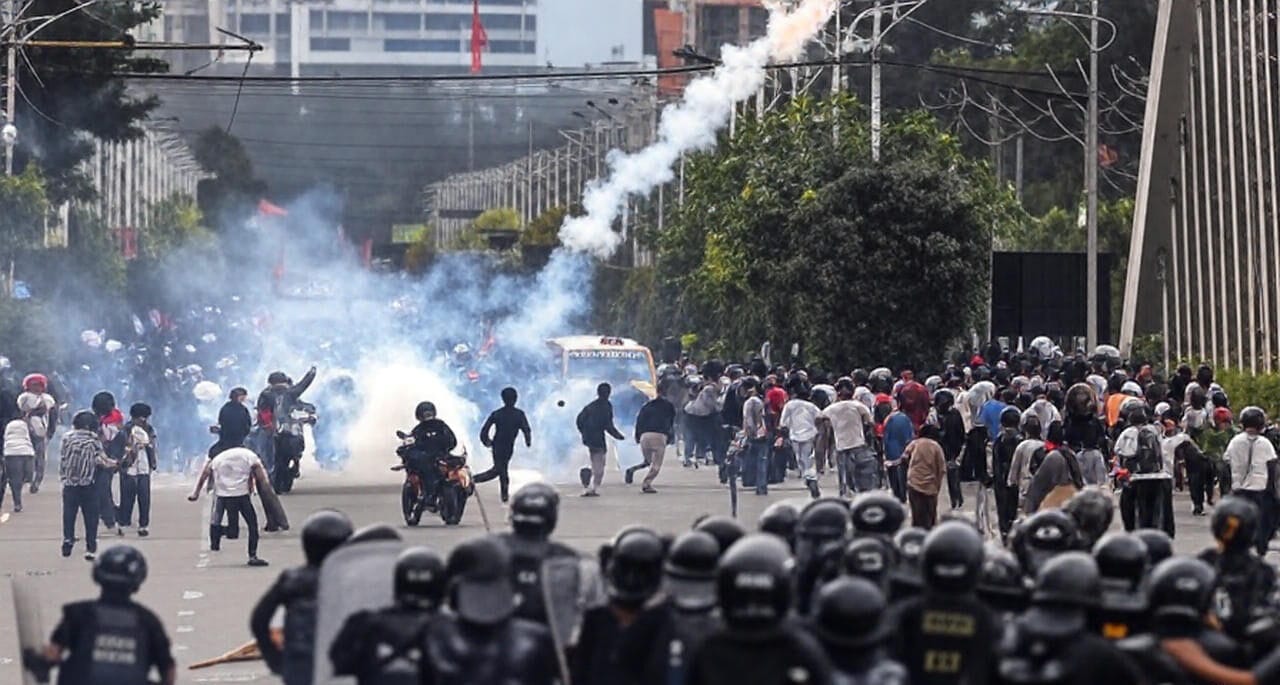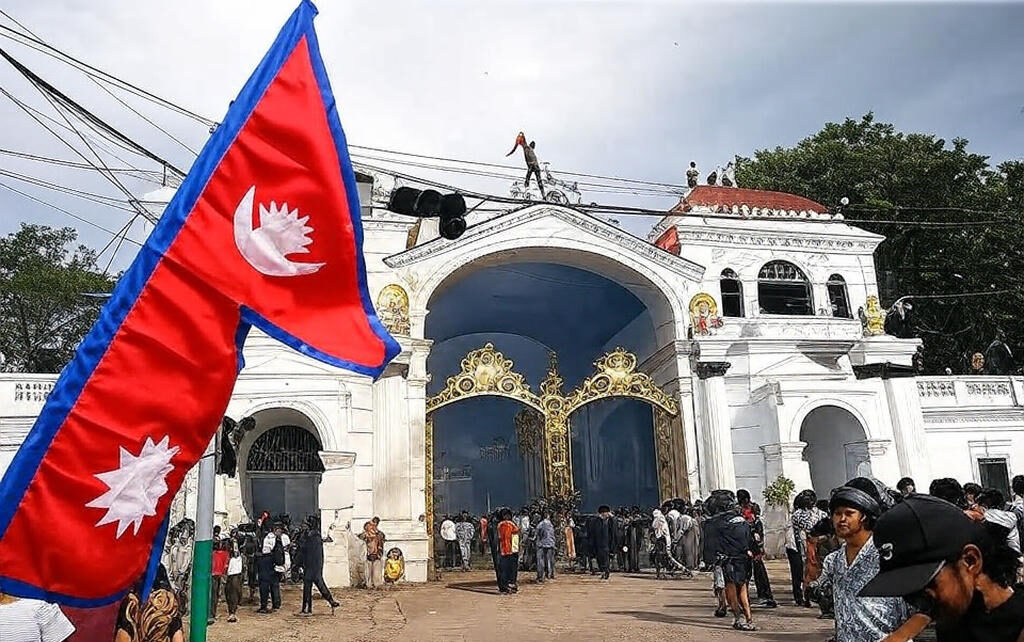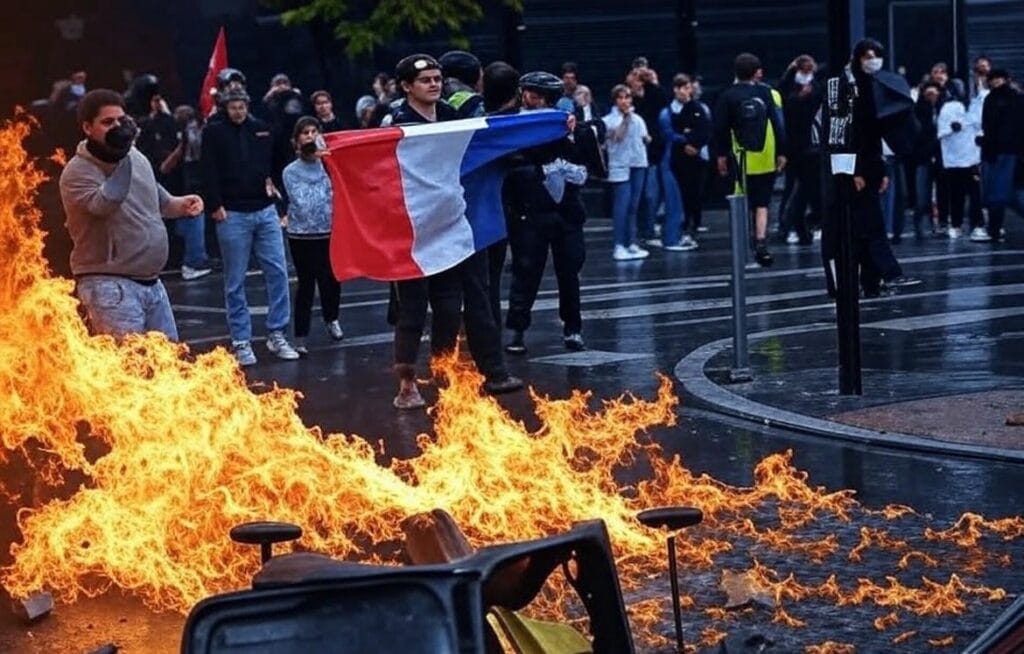
In recent days, escalating tensions in Nepal and France have drawn global attention as anti-government protests erupt, fueled by public frustration over governance, corruption, and economic disparities. In Nepal, violent demonstrations have claimed at least 25 lives, prompting military intervention and curfews in Kathmandu. In France, over 250 arrests have been reported as citizens protest government policies. Though geographically distant, these movements reflect shared discontent with political elites and systemic issues. This article examines the causes, developments, and implications of these protests, offering a comprehensive overview of the unrest in both nations.
Nepal
Triggers of the Protests
The unrest in Nepal began on September 8, 2025, sparked by a government decision to ban 26 social media platforms, including Facebook and WhatsApp, for non-compliance with local registration requirements. Widely perceived as censorship, this move followed a viral “nepo kids” campaign exposing the lavish lifestyles of politicians’ children amid widespread poverty. Combined with long-standing grievances over corruption, unemployment, and inequality, the ban ignited mass demonstrations led by Nepal’s youth, who identify as the “Gen Z” movement.
- Social Media Ban: The government’s attempt to regulate platforms was seen as an attack on free speech, fueling outrage.
- Economic Disparities: Nepal’s per capita income of $1,400 contrasts sharply with elite wealth, amplifying reform demands.
- Youth Unemployment: A 20% youth unemployment rate, per World Bank data, has driven young Nepalis to act.
Escalation and Violence

Initially peaceful, the protests turned deadly on September 8 when security forces used tear gas, rubber bullets, and live ammunition against demonstrators attempting to breach the Parliament in Kathmandu. At least 19 deaths were reported that day, with the toll rising to 25 by September 10. Protesters set fire to government buildings, including the Parliament, Supreme Court, and residences of politicians like former Prime Minister Sher Bahadur Deuba. Prime Minister K.P. Sharma Oli’s resignation on September 9 failed to quell the unrest, as crowds defied curfews, leading to widespread arson and vandalism.
- Government Response: The army imposed nationwide curfews until September 11, arresting 27 individuals for looting and recovering 31 firearms.
- Infrastructure Impact: Kathmandu’s Tribhuvan International Airport closed temporarily but resumed limited operations on September 10.
The Role of Gen Z and Future Outlook
Nepal’s “Gen Z” protesters, primarily students and young adults, have distanced themselves from the violence, claiming their movement was hijacked by opportunists. They advocate for systemic reforms and propose a former Supreme Court chief justice to lead an interim government. Kathmandu’s mayor, Balendra Shah, a 35-year-old rapper, has emerged as a supporter, urging peaceful protests. The escape of over 7,000 inmates during the chaos complicates recovery efforts. The military has called for dialogue, but Nepal’s path to stability remains uncertain.
France
Causes of the Demonstrations

In France, protests have intensified, with over 250 arrests across major cities. The unrest, which began in late August 2025, stems from dissatisfaction with economic policies, rising inflation, and perceived government overreach. Unlike Nepal’s youth-driven movement, France’s protests involve workers, students, and activists united against the administration’s handling of cost-of-living issues and labor reforms, which many view as favoring corporations over citizens.
- Economic Strain: Inflation and stagnant wages have hit low-income households hardest, fueling public anger.
- Policy Disputes: Recent labor reforms and proposed tax hikes have been criticized as inequitable.
- Political Polarization: Growing distrust in the government has amplified demands for accountability.
Developments and Government Response
Clashes between protesters and police have marked the demonstrations, with authorities using tear gas and water cannons. Over 250 arrests were made by September 10, with the government condemning vandalism, including damage to public property. Unlike Nepal, where the prime minister resigned, France’s leadership remains firm, promising dialogue while defending its policies. The protests have disrupted daily life, causing road blockades and public transport delays in cities like Paris.
- Security Measures: French authorities have increased police presence and imposed localized curfews in high-risk areas.
- Public Sentiment: Social media platforms show widespread support for the protests, with hashtags like #FranceUnrest trending globally.
Broader Implications
France’s unrest reflects a broader European trend of frustration with post-pandemic economic challenges and geopolitical tensions, such as the Russia-Ukraine conflict. Analysts warn that continued protests could strain France’s economy and influence upcoming elections. The government faces pressure to address grievances through reforms, but political polarization complicates consensus-building.
Global Context and Shared Themes
The protests in Nepal and France share common themes of frustration with governance and economic inequality. In Nepal, the focus on corruption and censorship highlights the role of digital platforms in mobilizing youth. In France, economic grievances underscore challenges in balancing growth with social equity. Both movements signal a demand for accountability, with Nepal’s youth and France’s broader coalition driving change.
- Youth Activism: Nepal’s Gen Z movement mirrors global protests in Bangladesh and Indonesia, challenging entrenched power.
- Economic Discontent: Both nations face anger over wealth disparities, a recurring theme in global unrest.
- Government Challenges: The use of force and curfews raises questions about balancing security with democratic rights.
Conclusion
The protests in Nepal and France highlight the fragility of public trust amid economic and social challenges. In Nepal, violent unrest has led to political upheaval, with the military restoring order. In France, the government faces pressure to address economic grievances. The outcomes of these protests could shape both nations’ political futures. For updates, monitor reputable news outlets and official statements.





